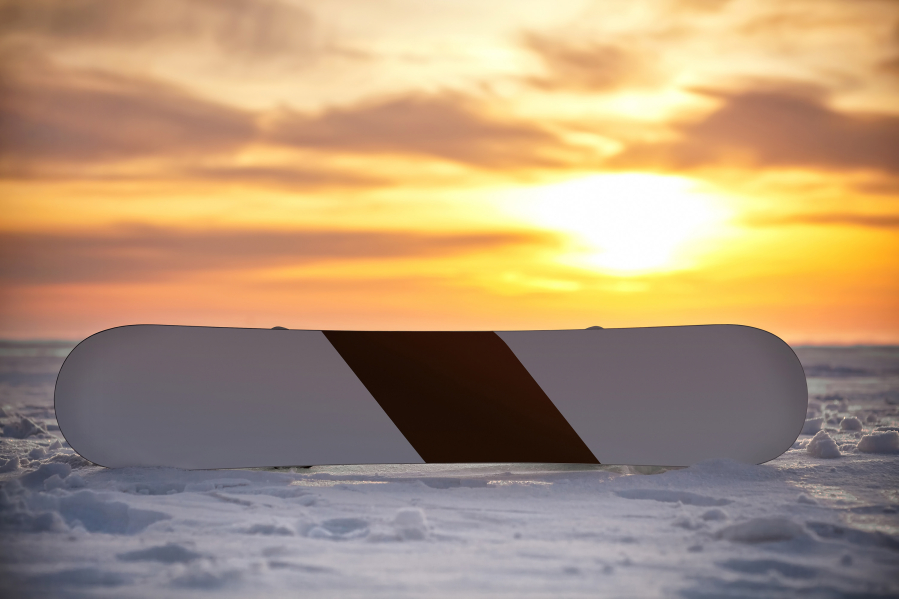SEATTLE — An old saw goes: There are old mountaineers and there are bold mountaineers, but there are no old, bold mountaineers.
Jeremy Jones can credibly claim to break that mold. A professional snowboarder since his teens who swapped the competitive circuit for the adrenaline-fueled, high-consequence world of big-mountain snowboarding, the 47-year-old has racked up decades of experience executing powder turns on steep faces where one misstep could be fatal. He shares his accumulated wisdom in the new book “The Art of Shralpinism: Lessons from the Mountains.”
“Shralpinism” is a portmanteau of “shredding” and “alpinism,” two pursuits Jones has combined with aplomb. Much of that effort has taken place in front of the camera, as a featured athlete in countless films and as the star of the trilogy “Deeper,” “Further” and “Higher.” Jones is also an outspoken outdoor-industry leader, who stopped using helicopters for his films, started climate nonprofit Protect Our Winters and founded environmentally conscious manufacturer Jones Snowboards.
Jones spoke to The Seattle Times via phone from his home in Truckee, Calif.
Why did you decide to write a book?
I’ve kept a journal most of my life. I read every day. I like the writing process. I felt like I could bring a perspective to the mountain community that’s beyond the textbooks and help people interact with the mountains in a safer, more intimate manner.
Going into the mountains is nuanced, both tactically and mentally. One bad call can erase a lifetime of good calls.
When you make a film, you can’t dive that deep into how we got on top of that mountain and figured out how to ride it. What I enjoyed about the book is that I could peel back the layers: This is how I go about it, and these are lessons learned.
There are journal entries from the night before I’m going to potentially ride a line way out of my comfort zone and right on the edge — zero-mistake snowboarding. I wrestle with the all-encompassing, take-over-your-body fear from these types of decisions.
Is the industry moving beyond “ski porn” films of endless powder and more willing to address risk and process?
There’s room for that style of film. I certainly have tried to bring that into “Deeper,” “Further” and “Higher.” Then you do have that party ski film in the sense of “Turn up the volume, and let’s just see some people rip.” There’s room for both.
What I try to convey is that there is a time when the mountains are ready for you. My new favorite line is: If it’s not a screaming yes, it’s a no. We’re not fabricating the risks in the mountains. We see the best of the best die every year.
Winter is about to be in full swing, so why do you save your most ambitious snowboarding for the spring?
The early season and midwinter is about stacking days and getting strong. Come spring, you’re generally dealing with a much simpler snowpack. Not to say it’s safe, but it’s less complex. What I am always gearing up for is high pressure from mid-March through May. That’s where the biggest, best lines of my life have gone down.
As ski resorts become more expensive and crowded, an increasing number of people are going straight to the backcountry. Why should aspiring shralpinists spend more time inbounds at resorts?
If you’ve never been on snow, or very little, the resort gives you more time. It’s all about stacking vert (skiing as many vertical feet as possible). There are no shortcuts. My thing was to ride more than anyone else in the world, and you’ll get to the upper 96th percentile with just a basic level of skill.
For me, the resort is much more about those obscure, hardpacked days. I don’t have an appetite for the hyped-out powder days. But I certainly like getting off-piste, riding marginal snow run after run, and finding the steep, bumpy, icy stuff. So often the case when you are backcountry skiing, you’re riding every type of conditions thrown at you, and so to have the reps from the resort is awesome.
I’ll tell my kids: This is the best ice we’ve seen in three years; we’ve got to get to the mountain and take advantage of this proper East Coast ice. (Jones learned to ski in New England, famous for its icy conditions.)
What advice do you have for skiing and snowboarding parents hoping to generate stoke in their kids?
Go slow. There’s a danger in being too forceful and turning them off the sport. That’s the biggest mistake. Kids getting pulled out of school early in first grade, and then by fifth grade, they’re (burned out).
Don’t try to make your kid into the next Olympian. It’s so rare; it’s not going to come because they had a better coach. It’s going to come from within that kid.
The whole point is fun: being out in nature, with your friends, with your family. At the end of the day, none of that has to do with how rad you are as a 10-year-old.
Cookies and candy don’t hurt as well. We always had a rule: If you take three runs, you get a cookie.



